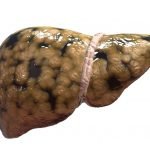Constipation | Part 1
A Symptom of Toxemia | Part 1 of 2
Sussanna Czeranko, ND
What is wrong with most people is that they want to eat things that are not good for them, they want to drink things that are not good for them, and they want to do things that are not good for them. But they also want to be healthy while doing these things. Stop doing the things that are making you ill and you begin to get healthier right away. Refuse to stop and you have an ‘incurable disease’.
James C. Thomson, 19541
Constipation is considered by leading health authorities as the cause, either directly or indirectly, of 90% of the sickness suffered by humanity.
G. R. Clements, 19232
For our early 20th century naturopathic founders, the foundation of true health resided in maintenance of a healthy gastrointestinal tract. The prevention of chronic disease was assured if constipation was not encountered. As Lindlahr pointed out, “In the sanitarium, first attention was always given to proper bowel action. Constipation was considered the fore-runner and producer of most of the troubles from which the chronic cases that visited the sanitarium suffered.”3 There was no shortage of material on constipation written in the past century to guide naturopathic doctors then. Their wisdom and experience are equally valuable today.
Their prolific literature included journal articles and entire books written on the subject of constipation. They warned of its dangers with as many approaches to remedial measures as the number of books written. A survey of this rich body of literature suggests, as Montague attested before WW II, that the medical writers of the time divided “all human ails and ills into three parts; namely, those conditions causing constipation, those which [were] caused by constipation and finally constipation itself.”4 But one message was very clear: constipation was just the tip of the iceberg. To understand why constipation was regarded as a dangerous menace to health, we need to gain an understanding of the complex relationship among enervation, toxemia and constipation.
Toxemia, the Efficient (First) Cause of All Disease
The early naturopaths recognized this synergy, manifesting partly, for example, in the intricate influence of the nerves on the digestion. One early author, Tilden, described the progression of disease, explaining that what begins as ‘enervation’ ultimately ends as ‘toxemia’.5(p22) Enervation was a result of anything that “uses up nerve energy faster than it is generated.”5(p60) A study by Spitler defined enervation as “a depressed state of the vital force … the maintainer and healer of the body.”6 Other commentators provided a steady stream of examples of what could cause enervation: “work or play to excess; love or hate; joy or sorrow; overwork or underwork of all the emotions; excessive eating; imprudent eating, eating wrong combinations causing indigestion, fermentation, decomposition; all ending in the establishing of Toxemia.”5(p60)
To early naturopathic teachers like Spitler, enervation of the vital force meant that the body’s ability to eliminate was compromised and consequently that “the blood stream is loaded with toxins and acids, secretion and elimination are inhibited. … Toxemia is the state of auto-intoxication resulting from the accumulation of poisons in the body … which are not thrown off by the body because of its enervated state.”6 Muller linked auto-intoxication to “the accumulation of filth in the large intestines as a breeding ground for all kinds of poisonous bacilli.”7 Tilden added to our understanding by explaining that once enervation and toxemia had occurred, constipation accompanied by a lack of secretions and excretions would result, manifesting a ‘vicious circle’ of “indigestion, gas distention, headaches, heart palpitation, chilliness, cold hands and feet, dizziness, etc.”5(p59) Tilden’s definition of toxemia and the crises of toxemia is as helpful today as it was 9 decades ago:
“In the process of tissue building (metabolism) there is cell building (anabolism) and cell destruction (catabolism). The broken down tissue is toxic and in health when nerve energy is normal it is eliminated from the blood as fast as evolved. When nerve energy is dissipated from any cause, physical or mental excitement, or bad habits, the body becomes enervated; when enervated, elimination is checked, causing a retention of toxin in the blood or Toxemia. This accumulation of toxin when once established will continue until nerve energy is restored by removing the causes. So-called disease is nature’s effort at eliminating the toxin from the blood. All so-called diseases are crises of Toxemia.”8
Tilden goes on to say, “the stomach is the barometer of the nervous system. When the mind is depressed or if there is an abnormal state of the emotions, the stomach shows the effect at once in failing to digest well.”5(p42) Tilden concluded, “when food is not digested properly, it ferments, and from this source toxin is developed [adding] to the already toxemic condition of the blood.”5(p48) His contemporary, Muller, commented several years later, “chronic constipation invariably brings a person face to face with the results of chronic ailments and these ailments … end up in a thousand and one other diseases, more dangerous than the originating cause.”9 Kellogg added to this lively medical conversation by insisting that mental diseases were a result of intestinal toxins and that “constipation and toxemia lead to insomnia and depression” and in time to mental disturbances.10
With such a range of symptoms and presenting conditions, we may well want a clarifying definition of constipation itself from the period, in order to sift through this voluminous literature.
What is Constipation?
Clements pointed out during an explosion of articles and books on the subject in the 1920s, “the colon of the person whose bowels move but once daily is nearly always 2 or 3 days in arrears. One daily movement does not secure complete evacuation of the organ, but represents only the necessary overflow of a colon crowded to distension with the putrefying residues of 6 or 10 or more meals.”2(p763) Having the colon distended for long periods of time and clogged with old bodily waste implied dysfunction and potential toxic accumulation, especially since the bowel contents eventually had to go somewhere. Clements contended,
“If the colon were merely a reservoir, a receptacle for the waste, no harm could come from the long delay. But this organ is far more than a mere reservoir: it is endowed with millions of tiny absorbent glands, which are constantly at work, conveying liquids from the interior of the colon into the blood. However, 75% of the fecal matter that has passed from the small intestines to the large intestine has been taken up by the body.”2(p765)
We are not surprised then to learn that much discussion on what constituted a healthy stool appeared in books and articles in those years. Stools were variously described as “light brown, soft and compact and covered with a mucous coating … [such specimens were observed] in the case of all healthy animals and so it should be in the case of healthy [wo/]men.”11 MacFadden describes the normal stool as “well formed, smooth and not knotty, cylindrical and not spherical in form, from an inch to an inch and a quarter in diameter and totaling from six to eight ounces in weight and medium brown color.”12(pp18-19)
Passing a bowel movement, whatever the shape, color and texture of the sample, within 24 hours of eating was generally accepted as healthy. To determine bowel regularity, it was not an unusual practice to administer a test. “A good dose of charcoal mixed with porridge or some other food, gives the stool a black colour. [The patient] will notice when the black colour begins to appear and when it leaves off” and gauge the transit time.13 People “who have established the three-stool-a-day habit usually get rid of the residue within fifteen or sixteen hours.”13
Causes of Constipation
Tilden lists seven factors contributing to constipation with toxemia as the number one cause followed by drinking water after meals. Overindulgence of dry food such as cakes, meat, and potatoes that created thirst after eating Tilden saw as “disease-producing”.8(pp63-64) The other factors include: lack of coarse food, carelessness in responding to nature’s call, overeating, a lack of poise and finally, a lack of exercise.8(pp66-79)
A further complicating factor, which would likely have engendered considerable interest on the part of our early naturopathic colleagues, is that in the 21st century our foodstuffs have become refined and processed to the point that we do not even understand what is in our food. The average contemporary consumer can be outraged just reading the label as they discover the 10,000 food additives which have come along in recent decades since our naturopathic elders first wrote about constipation and gastrointestinal issues.
The concern for unadulterated nourishment has been with us for a long time. Over 100 years ago, for example, doctors blamed the changes in milling practices for the surge in appendicitis documented at the time. Dr. Howard, of Champaign, Illinois attributed this particular shift in the incidence of appendicitis on “the demand for exceedingly white flour.”14 In Lust’s view, coarse breads were all healthy and “better than the loose, spongy white breads, which [were] lacking waste material and nourishing ingredients.”15 At the same time, another great naturopathic pioneer, Lindlahr, linked [the cause of increased appendicitis and constipation] to the removal of the wheat’s germ that contained diastase and peptase and hulls causing constipation.16 He was staunchly opposed to eating any milled grains and extolled the properties of “cereal products prepared from whole meal only.”17
Howard and Lindlahr were not alone is seeing the correlation between diet and bowel habits. In 1927, Muller asserted the only way to prevent constipation was by entirely eliminating foods that had not had their life-building qualities killed in the manufacturing process that they were being put through.18 Tilden labeled “the dehydrated, preserved and cooked foods [as] dead.”5(p110)
Others, such as Clements, targeted the dietary foibles due to “civilized, Americanized, modernized foods.”2(p762) The growing concern led Tilden to assert that people’s addiction to mutilated foods was greater than the fear of “senseless and useless surgery.”5(p54) Lindlahr insisted, “the excessive use of meat, white bread, coffee and white sugar [were] undoubtedly the most common cause of constipation and the resulting auto-intoxication.”17 MacFadden and others saw overeating as the most prominent cause for constipation.12(p39) Next month we will survey what our earlier doctors and teachers suggested could be done about this accumulating health problem.
Sussanna Czeranko, ND, BBE is a licensed naturopath in Ontario and Oregon. She is currently a faculty member in the Advancement Department at NCNM conducting historical research in its rare books room. She is applying these studies to the creation and delivery of an ongoing curriculum centered on nature cure, including balneotherapy and Buteyko, a Russian breathing therapy. She is a faculty member working as the rare books curator at National College of Natural Medicine. She is currently compiling several books based on the journals published by Benedict Lust. In addition to her work in balneotherapy, she is the founder of The Buteyko Academy, a training program for NDs to incorporate a scientific model of breathing therapy called Buteyko into their repertoire.
References
1. Thomson JC. Two Health Problems: Constipation and Our Civilization. London: Thorsons Publishers Ltd.; 1954:18.
2. Clements GR. Deadly constipation. The Naturopath. 1923;28(12):762-765.
3. Lindlahr VH. The modern treatment of constipation. In: Lindlahr H. The Practice of Nature Cure. 27th ed. New York, NY: The Nature Cure Library Inc.; 1931:210.
4. Montague JF. How to Overcome Nervousness and Other Forms of Constipation. 1938:15.
5. Tilden JH. Constipation, A New Reading on the Subject. Denver, CO: M.D. Publishing; 1923:22,42-60,110.
6. Spitler HR. Basic Naturopathy; A Textbook. American Naturopathic Association, Inc.; 1948:191.
7. Muller EW. Constipation, its danger, prevention and cure by colonic (intestinal) irrigation. Nature’s Path. 1927;3(3):114.
8. Tilden JH. Toxemia Explained, The True Interpretation of the Cause of Disease: How to Cure is an Obvious Sequence, An Antidote to Fear, Frenzy and the Popular Mad Chasing After So-Called Cures. Rev. ed., Denver, CO: M.D. Publishing; 1924:13,63-64,66-79.
9. Muller EW. Constipation, its danger, prevention and cure by colonic irrigation. Nature’s Path. 1927; 3(1):19.
10. Kellogg JH. The New Dietetics, A Guide to Scientific Feeding in Health and Disease. Vol. 1. Battle Creek, MI: The Modern Medicine Publishing Co; 1923:850.
[1]1. Kuhne L. The New Science of Healing or the Doctrine of the Unity of Diseases forming the basis of a Uniform Method of Cure, without Medicines and without Operations. Leipsic, Germany: Louis Kuhne; 1894:127. [1]2. MacFadden B. Constipation, Its Cause, Effect and Treatment. MacFadden Publications, Inc.; 1924:18-19,39. [1]3. Barker JE. Chronic Constipation, The Most Insidious and the Most Deadly of Diseases: Its Cause, Grave Consequences and Natural Cure. London: John Murray Publishing; 1927:463.14. Lust B. Appendicitis is due to white flour. The Naturopath. 1903;4(4):103.
15. Lust B. The causes and treatment of chronic constipation. The Naturopath. 1903;15(6):323.
16.Lindlahr H. Philosophy of Natural Therapeutics. 4th ed. Chicago, IL: The Nature Cure Publishing Co.; 1922: 89-90.
17.Lindlahr H. The Practice of Nature Cure. 27th ed. New York, NY: The Nature Cure Library, Inc.; 1931:84.
18. Muller EW. Constipation, its danger, prevention and cure by colonic irrigation. Nature’s Path. 1927; 3(2):92-93.










